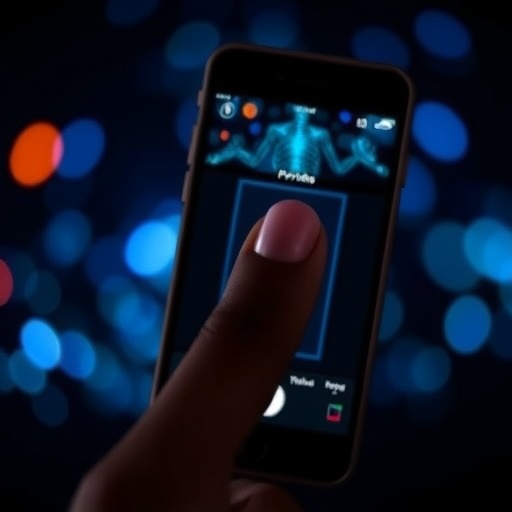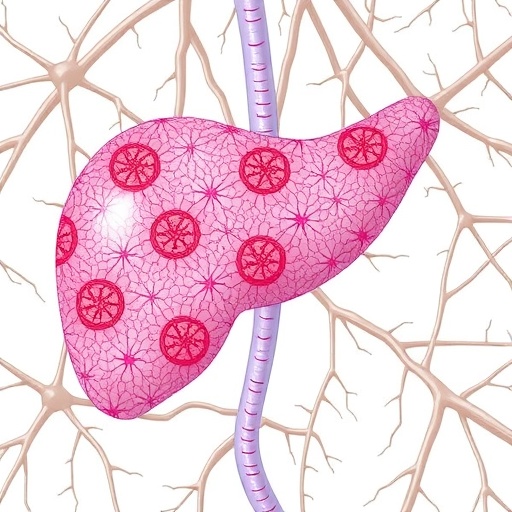Anemia, a pervasive global health challenge, continues to affect over two billion individuals worldwide, including approximately 83 million Americans identified as high-risk. This condition, characterized by a deficiency of hemoglobin in the blood, impairs oxygen transport throughout the body, leading to fatigue, weakness, and severe complications if left untreated. Addressing the widespread need for accessible, reliable screening tools, a groundbreaking innovation has emerged: a smartphone application that employs artificial intelligence to noninvasively estimate hemoglobin levels through fingernail imagery.
This novel approach was detailed in a recent publication in the prestigious Proceedings of the National Academy of Sciences (PNAS) by a multidisciplinary research team, including Dr. L. Andrew Lyon, founding dean of the Fowler School of Engineering at Chapman University. Their work represents a significant leap forward in bridging the divide between laboratory diagnostics and consumer-accessible health monitoring. The core technology harnesses advanced AI algorithms capable of analyzing subtle colorimetric changes and morphological features in fingernail images, inferring hemoglobin concentrations with precision comparable to standard clinical blood tests.
The methodology involves users taking a photograph of their fingernails under controlled lighting conditions using the smartphone camera. The application’s AI layer then processes the image to extract relevant spectral and textural features correlated with hemoglobin content. These noninvasive hemoglobin measurements revealed a mean absolute error margin of ±0.72 g/dL across the user base, improving to ±0.50 g/dL for individuals with hemoglobin values exceeding 10 g/dL. Such accuracy benchmarks are remarkably close to those obtained through venous blood draws analyzed in laboratory settings, underscoring the app’s potential for clinical utility.
Remarkably, the app has demonstrated notable scalability and public reach: since its launch, over 1.4 million tests have been executed by more than 200,000 distinct users. The implications of such widespread uptake are profound, as this technology can enable large-scale epidemiological surveillance, especially in regions where traditional health infrastructure is limited. The integration of geolocation data further empowered researchers to construct the first county-level map of anemia prevalence across the United States, offering new insights into demographic and geographic patterns of this hematological disorder.
This innovation addresses a pressing need within healthcare’s ongoing quest to democratize access to medical diagnostics. Conventional hemoglobin testing requires venipuncture, laboratory resources, and time-consuming processes, which can create barriers in underserved and remote populations. By contrast, this AI-driven app provides a low-cost, scalable alternative that requires nothing more than a smartphone—an increasingly ubiquitous device globally—combined with intelligent software.
The potential public health impact extends beyond individual patient management. Real-time hemoglobin monitoring can facilitate earlier detection of anemia, enabling healthcare providers to initiate treatment sooner and potentially reduce complications. Furthermore, aggregated anonymized data from app users could inform public health policies, resource allocation, and targeted interventions in anemia hotspots, effectively transforming how health authorities understand and tackle this condition.
Dr. L. Andrew Lyon, whose expertise straddles engineering and translational science, emphasizes the protracted, multidisciplinary effort underlying this technology’s creation. “This research, more than eight years in the making, represents a meaningful step toward improving accessibility in healthcare,” he remarks, highlighting the collaboration between engineers, clinicians, and data scientists. The project epitomizes Chapman University’s commitment to leveraging cutting-edge engineering innovation for tangible societal benefits.
Technically, the AI algorithms employ machine learning models trained on extensive datasets that correlate specific fingernail characteristics—such as coloration, translucency, and vascular patterns—with hemoglobin concentration. The models utilize convolutional neural networks (CNNs) alongside spectral analysis to discern subtle features undetectable to the human eye. Ongoing research aims to refine these models further, incorporating larger, more diverse datasets to improve robustness across varied skin tones and lighting conditions.
The app’s user-friendly interface is designed to guide users through standardized image capture protocols, mitigating variability introduced by ambient lighting or camera quality. Through iterative feedback loops, the system can adapt to an individual’s unique physiological attributes, enhancing measurement fidelity. The noninvasive nature of the technology not only improves patient comfort but also reduces biohazard risks and logistical challenges associated with blood sample handling.
Looking forward, the integration of this AI-powered screening tool into broader digital health ecosystems could revolutionize how hematological conditions are monitored and managed globally. Potential extensions include compatibility with wearable sensors and incorporation into telemedicine platforms, enabling seamless communication between patients and healthcare providers. This innovation aligns with the broader trend toward personalized, decentralized healthcare propelled by advances in artificial intelligence and mobile technologies.
The societal implications of democratizing anemia screening are particularly salient in low-resource settings where access to laboratory infrastructure is constrained. Enabling individuals to monitor their hemoglobin status conveniently at home or in community settings could dramatically enhance early detection rates and timely referral, ultimately improving clinical outcomes. Importantly, the application is positioned as a screening, not diagnostic, tool to encourage users to seek professional medical advice when readings suggest abnormalities.
In summary, the development of an AI-augmented smartphone application capable of accurately assessing hemoglobin levels represents a paradigm shift in anemia screening and management. This technology heralds a future where noninvasive, low-cost, and widely accessible diagnostics empower individuals and healthcare systems alike, potentially mitigating the global burden of this common yet often overlooked blood disorder.
Subject of Research: Development and clinical evaluation of an AI-powered smartphone app for noninvasive anemia screening through fingernail imaging
Article Title: AI-Driven Smartphone Application Enables Accurate, Noninvasive Screening for Anemia via Fingernail Analysis
News Publication Date: [Not specified in source]
Web References:
https://www.pnas.org/doi/10.1073/pnas.2424677122
References:
Proceedings of the National Academy of Sciences (PNAS) publication detailing the study and validation of the AI-based anemia screening app.
Keywords:
Anemia, AI, artificial intelligence, hemoglobin estimation, noninvasive screening, smartphone application, blood diseases, digital health, chronic disease management, public health, translational medicine
Tags: accessible screening tools for anemiaadvanced AI algorithms in healthcareAI-powered anemia screeningChapman University research innovationcolorimetric analysis in medical applicationsconsumer health technology advancementsdigital diagnostics for anemiafingernail imagery for health assessmenthemoglobin level estimation technologymultidisciplinary research in medical technologynoninvasive anemia diagnosissmartphone application for health monitoring





